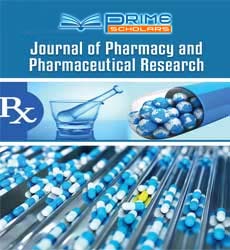Opinion - (2023) Volume 7, Issue 3
Ensuring Medication Consistency: The Significance of Bioequivalence in Drug Development
Eric Hauns*
Department of Pharmaceutics, University of Melbourne, Australia
*Correspondence:
Eric Hauns,
Department of Pharmaceutics, University of Melbourne,
Australia,
Email:
Received: 29-Aug-2023, Manuscript No. IPIPR-23-18166 ;
Editor assigned: 31-Aug-2023, Pre QC No. IPIPR-23-18166 (R);
Reviewed: 14-Sep-2023, QC No. IPIPR-23-18166 ;
Revised: 19-Sep-2023, Manuscript No. IPIPR-23-18166 (PQ);
Published:
26-Sep-2023, DOI: 10.21767/ipipr.7.03.026
Introduction
In the world of pharmaceuticals, ensuring the safety and effectiveness
of medications is paramount. One critical aspect of this
process is the evaluation of bioequivalence. This term refers to the
similarity in pharmacokinetic parameters between a generic drug
and its brand-name counterpart. In this article, we will explore the
concept of bioequivalence, its importance in drug development,
and the role it plays in providing patients with high-quality and
affordable medications. Bioequivalence is a fundamental concept
that assesses the similarity between a generic drug and its reference
(brand-name) product. It primarily focuses on pharmacokinetics,
which involves the study of how a drug is absorbed, distributed,
metabolized, and eliminated by the body.
Description
Bioequivalence studies aim to determine whether a generic drug
achieves the same blood concentration, rate of absorption, and
extent of absorption as the brand-name drug when administered
at the same dose under similar conditions. Ensuring that generic
drugs are bioequivalent to their brand-name counterparts is critical
for patient safety. It confirms that the generic medication will
work in the same way and have the same therapeutic effects. Generic
drugs are typically more affordable than brand-name drugs.
Bioequivalence allows patients to access high-quality, cost-effective
medications, reducing the financial burden of healthcare.
Encouraging generic competition through bioequivalence studies
can drive pharmaceutical innovation and promote the development
of new medications. These studies focus on the physical and
chemical characteristics of the generic drug, comparing them to
the reference drug. Testing assesses dissolution profiles, particle
size distribution, and other properties to ensure similarity.
Studies involve human subjects and compare the bioavailability of
the generic drug with the reference drug. This involves evaluating
the drug’s absorption, distribution, metabolism, and excretion in
the body. Bioequivalence doesn’t necessarily guarantee therapeutic
equivalence, as the clinical effects of two bioequivalent drugs
may differ in some patients. For drugs with a narrow therapeutic
index (where small changes in dosage or blood concentration can
lead to significant effects), even minor variations in bioequivalence
can be a concern.
The development of complex generics, such as inhalers and biologics,
presents unique bioequivalence challenges that require
specialized testing and evaluation. Stricter standards and more
sophisticated testing methods are being developed to address the
challenges associated with bioequivalence, especially for complex
drugs and those with narrow therapeutic windows. As a result, patients
and healthcare providers can have greater confidence in the
interchangeability and effectiveness of generic medications, which
is crucial in reducing healthcare costs and expanding access to essential
treatments.
Conclusion
Bioequivalence testing and regulation are continuously evolving as
the pharmaceutical industry advances. Bioequivalence is a critical
component of drug development and regulation, ensuring that generic
medications are safe, effective, and affordable alternatives to
their brand-name counterparts. By evaluating the pharmacokinetic
parameters of generic drugs and comparing them to reference
products, the pharmaceutical industry maintains high standards
of quality and patient safety. While challenges exist, continued
research and development in the field of bioequivalence will contribute
to the availability of a wider range of reliable, cost-effective
medications, ultimately benefitting patients and healthcare
systems around the world.
Citation: Hauns E (2023) Ensuring Medication Consistency: The Significance of Bioequivalence in Drug Development. J Pharm Pharm Res. 7:026.
Copyright: © 2023 Hauns E. This is an open-access article distributed under the terms of the Creative Commons Attribution License, which permits unrestricted use, distribution, and reproduction in any medium, provided the original author and source are credited.

